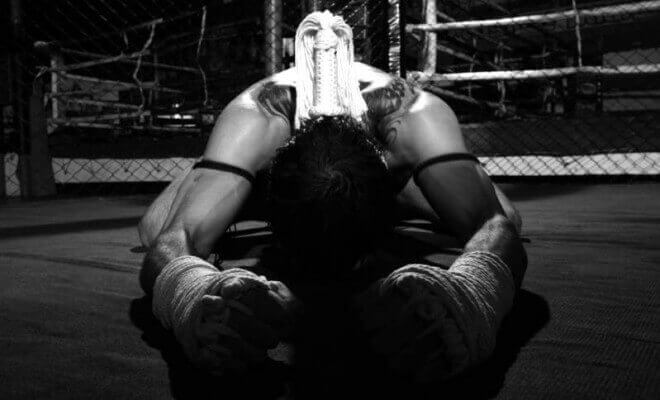
Muay Thai has badass roots. It developed on the battlefield, kingdoms decided by butchery and brutal hand to hand combat. Forget riding into battle on a horse or swinging a sword, whole armies fought to the death with their bare hands. It’s evolved but it hasn’t changed, a barbaric history elevated into a modern sport by Thai kings.
But there’s a history to Muay Thai that comes from before the record books, one that precedes traditional chronicles. It’s an uncut version of how immigrant tribes used Muay Thai to survive and prosper. It’s a history of mist and myths, legends and warriors, one that claims Muay Thai was a means of attack, not merely defense. It’s a history of businessmen and royalty using fighters to resolve their own disputes.
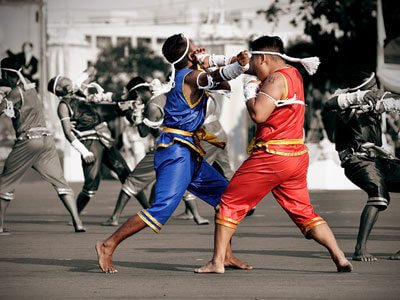
Traditional History of Muay Thai
Popularized history suggests that Muay Thai developed around the mid 16th century as a means of military training and combat on the battlefield. The Burmese and the Sian were constantly at war, raping each other’s women and raiding opposing villages with their elbows and knees. Muay Thai had an evolutionary element; survival demanded the fittest and those that fought well, lived to teach the others before falling themselves. Learning the military arts or “Muay Thai” became an essential part of local culture. Even the monks were heavily involved. Forget notions of barefooted red-robed spiritualists seeking peace; these monks were the instructors, teaching how to use the entire body as a weapon. The sport became cultural currency, transcending class boundaries. It wasn’t rich and poor. Muay Thai created warrior against warrior.
Academic records and archaeological evidence shows that Muay Thai was used to defend homelands and repel the continual threat of invasion. It grew up as a means of defense, promoted by kings and the mainstay of military training. But much of the Muay Thai history was destroyed when the Burmese sacked the capital of ancient Siam (Thailand) in the 14th century. Temples were looted and written history disappeared. Some academics have been promoting an unknown history that suggests Muay Thai wasn’t a form of defense, it was a means of attack.
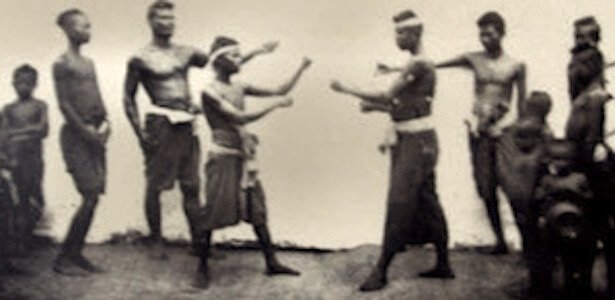
The Secret History of Muay Thai
Scholars agree on Muay Thai using eight points of contact for the body to mimic weapons of war, hence “the Art of Eight Limbs.” Hands became the sword and dagger, shins and forearms were armor, the elbow was the heavy mace or harmer, while the legs and knees became the axe and staff. The body was a single killing unit, knees and elbows constantly searching for an opening. Back in the 8th century, ancient weapons consisted only of spears, swords, and pikes. But these were clumsy in close quarters combat and less practical.
Between the 8th and 12th century, the Tai tribe were emigrating from the South of China to the jungles of what are now Burma, Northern Thailand, and Northern Laos. One version of history suggests:
“The Tai tribe immigrants had to hide from attackers and met with resistance from local people. In short, they had to fight endlessly for their survival.” (Ajarn Chai Sirisute, World Thai Boxing Association)
Another version indicates that rather than being an effective defense, Muay Thai was a form of attack, with the immigrants developing a fierce reputation as fighters.
“The ancient tribes were skilled at both weapons and empty hand techniques. Rather than run, they would start skirmishes on the outskirts of villages to showcase their fighting ability. A fearful reputation followed them, helped the Tais take over a large and fertile land.” (Aya Channarong, Thai scholar)
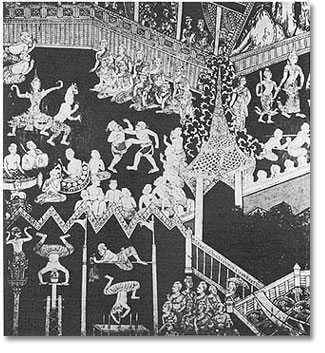
Why Muay Thai was so Effective
The Tais (later to become Thais), were incredibly successful. They blossomed from being a small mountain tribe in South China to a large nation in the space of just two or three centuries. Muay Thai redefined warfare in the region because it was so quick and without ritual (Wai Kroo came later). A fighter was always ready and always armed; which is very different to the battles that raged in Europe, where armies would take hours just to put on their armor. The Thais could repel surprise attacks and attack other tribes without any warning. This secret history is largely shunned by Thai historians who continue the mantra that the Tai tribe were merely practicing self-defense. But you need more than defense to turn a small mountain tribe into the largest kingdom in Southeast Asia.
17th Century Muay Thai as a Form of Village Policing
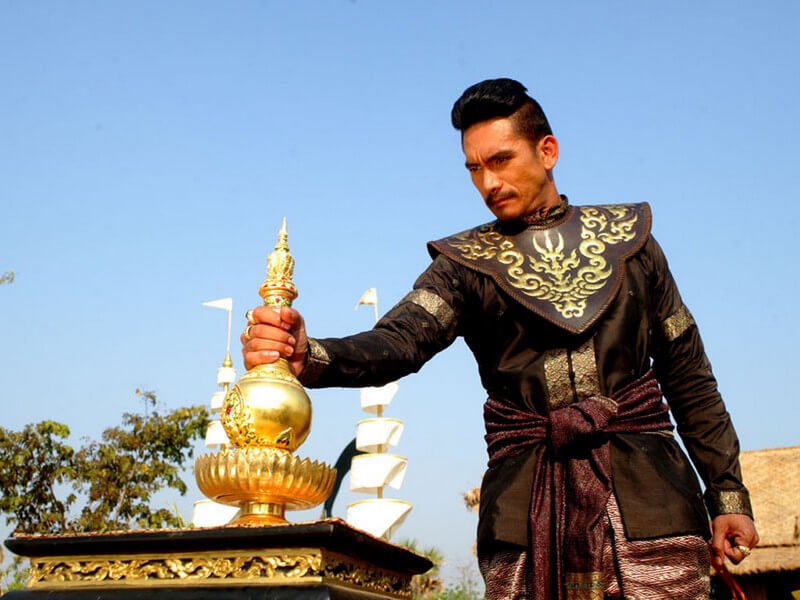
King Naresuan
As Thailand’s kingdom developed it needed more widespread protecting. Traditional history tells that King Naresuan was the first to mobilize a whole army using Muay Thai. It became the national sport, with fight centers becoming the era’s equivalent to universities developed in Europe. Young men devoted their lives to hand to hand combat and Krabi Krabong (the sword, staff and sitck). The fighting units were fully professionalized to repel the army that could match the size of the Thai’s – the Burmese.
During King Naresuan’s rule, the sport developed from battlefield to ring, with villages hosting competitions that would crown a local champion. There were no weight divisions or rules; it was Muay Thai at its most brutal. These local champions would be financed by wealthy businessmen or royalty, used as pawns to police any debates. If two men had a quarrel, it would be solved by sending their two designated fighters into the ring. The “ring” was just a rope on the ground and fighters often fought until death, cheered on by their businessman sponsor. Disputes between villages were solved by two men in a ring. Better fighters were bought by more esteemed royalty and richer businessmen. City to city rivalries were also resolved by local fighters with the King snapping up the very best for his personal menagerie.
Wai Kroo and the Spiritualist Element of Muay Thai
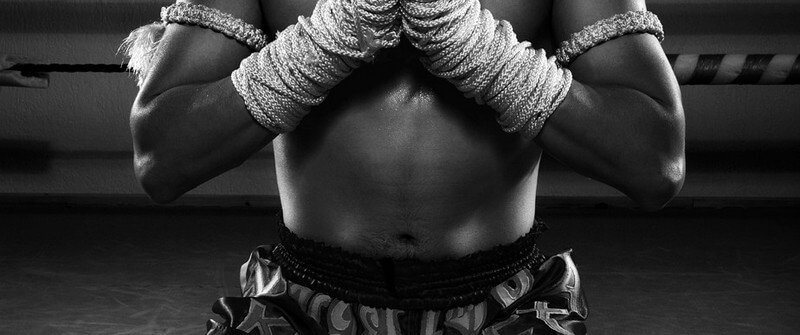
It was only during this King Naresuan period that the ritualistic element of Muay Thai developed. Once the ring was introduced and villagers flocked to watch fights, Wai Kroo developed as a dance to honor masters and royalty. Fighters would dance in each direction of the ring, showing respect to his opponent, the spirits, his teacher, and also his sponsor. After all, the fighter had to believe and show faith in who was providing the paycheck. Traditional Muay Thai history argues that Wai Kroo was something ingrained in Muay Thai from the sport’s first origins. However, when the Tai were a small fighting tribe, there was no time to honor the spirits. They were ready to fight at all times.
Hand to Hand Fighting and the Tiger King

By the era of King Prachao Sua, Thailand was a fully fledged kingdom with a badass army of fighters. Practically every man in the kingdom was trained in Muay Thai from the time they could walk. Disguised as a village commoner, King Prachao Sua toured the country, entering Muay Thai tournaments and participating against notable fighters. Nobody would dare to fight the revered king, so he was forced to conceal his royalty. He built local legends like Nai Klan Madthai (Killing Fists), Nai Yai Madklek (Fists of Iron) and Nai Lek Madnok (Strong Fists) and when his camoflague was betrayed he took on the mantle of the “Tiger King.” During his rule, Muay Thai evolved to become entertainment. Fighters were recruited and fought for royalty and for the honor of becoming royal guards. Even when the ring was introduced under King Naresuan, fights had a designated purpose; they settled disputes or nominated a warrior who would control a village’s security. Muay Thai now became entertainment. We haven’t got any footage of those ancient era fights, so here’s a Thai guy kicking the shit out of a banana tree instead.
The Bedtime Story of Legendary Nai Khanomtom
Back in early 20th century Thailand, children weren’t accompanied to bed with fairytales. They were sent to dream about legends and warriors, the most famous being Nai Khanomtom from the 18th century. When the Burmese sacked Ayutthaya, Thailand capital, they took an army of prisoners back across the border. Bored with his harem, the Burmese King Mangra organized fights between his best fighters and the best Muay Thai warrior prisoner, a man known as Nai Khanomtom. The Burmese fighting style was Parma, very similar to modern kickboxing.
Imagine the scene. No timekeepers, no rounds, no gloves, no notions of low blows; just arms bound in hemp ropes and the king amongst the spectators in a fight to the death. The Burmese danced around in an ankle length sarong and relied on fists. Nai Khanaomtom fought in a loincloth and used his whole body. He beat one. He beat another. He defeated ten of Burma’s best fighters and was awarded his freedom (they could make a Gladiator style movie about this), returning to Thailand to become a hero, symbolizing the willingness to face any odds to defend the fighting art. 17Th March in Thaialnd is called “Boxing Night,” with every stadium in the country dedicating fights to the valor and honor of Nai Khanaomtom.
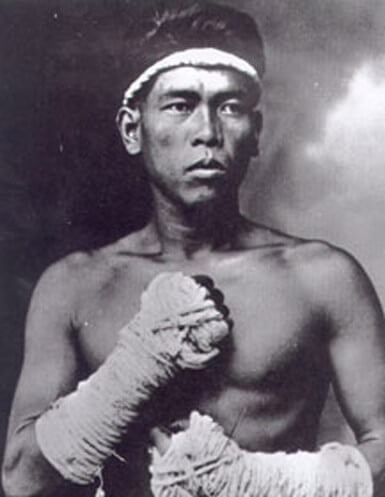
Nai Khanomtom
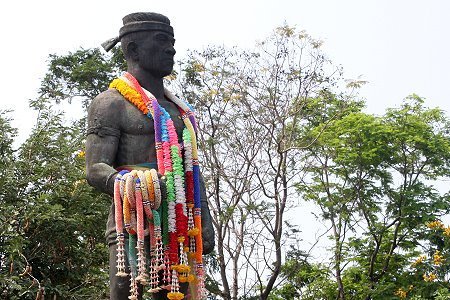
A statue honored on March 17th
King Rama I and the Disgraced French Boxers
Fast forward to King Rama I and the late 18th century and Muay Thai had slipped into the world domain. Two French brothers arrived in Thailand, looking for fights against locals for cash. The French duo placed a bet against King Rama I; the best brother against the best Thai boxer you can find. A ring was erected at the Grand Palace at the temple of emerald Buddha, with a royal crowd as spectators. At first, the French boxer was stronger than the smaller and faster Thai, his punches causing significant damage and a worried looking king. Eventually he began to tire. The Thai boxer took control and was on the verge of winning, when the French boxer’s brother jumped into the ring (WWF style we’re imagining) to tag team the Thai boxer. A riot ensued, with King Rama I and his royal guards storming the ring; every foreigner in attendance was practically beaten to death.
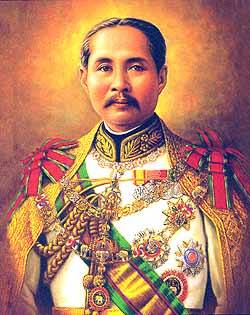
King Rama
Muay Thai’s Introduction to the World
Those two French boxers could have introduced Muay Thai to the world. But they left with tails between their legs and never fought again. It wasn’t until WWI that Muay Thai finally made it onto the world stage. With the region under French colonial rule, Thai soldiers were recruited to fight in Europe, where hand to hand combat was pretty futile against trenches and guns. French commanders organized Muay Thai bouts as morale boosting entertainment for the army. It remained seriously intense; fighters soak their hemp rope binding in sticky resin and dipped their hands in crushed glass and ash.
In WWII, foreigners stationed in Thailand were fully immersed in Muay Thai. Suitably impressed, they asked Thai soldiers to train them. It was only now that formal rules were introduced, influenced by the imported professionalism of boxing and other combat sports. Fights were divided into five rounds with time limits counted on a coconut shell. The shell was placed in a barrel of water, and once it had sunk the round was over. Weight classes were also introduced and Muay Thai became the sport as the world knows it. A far cry from when tribal warriors clashed hand to hand in villages.
Page 1 of 1:





